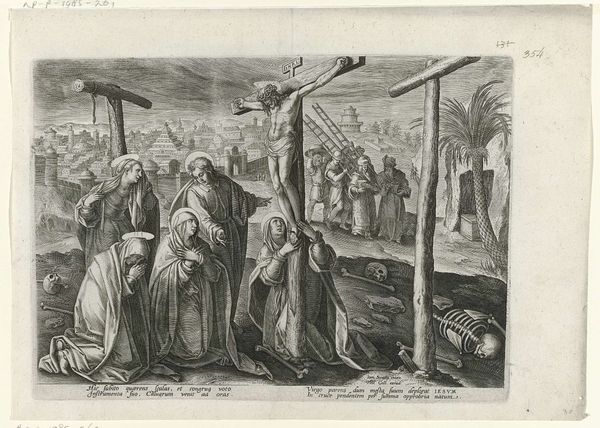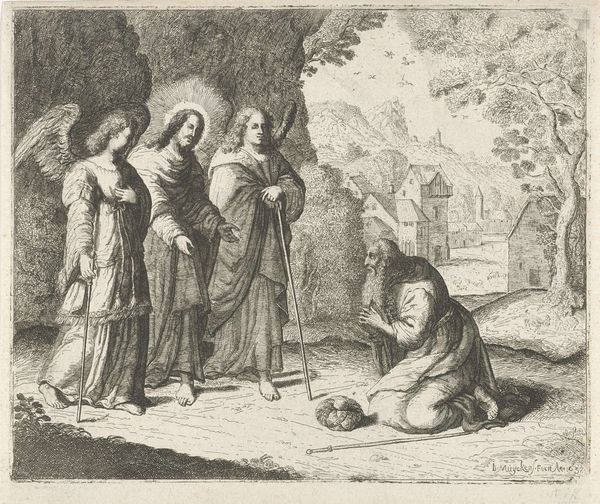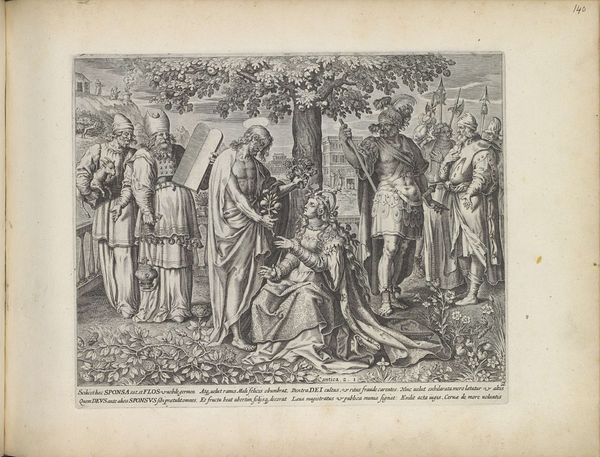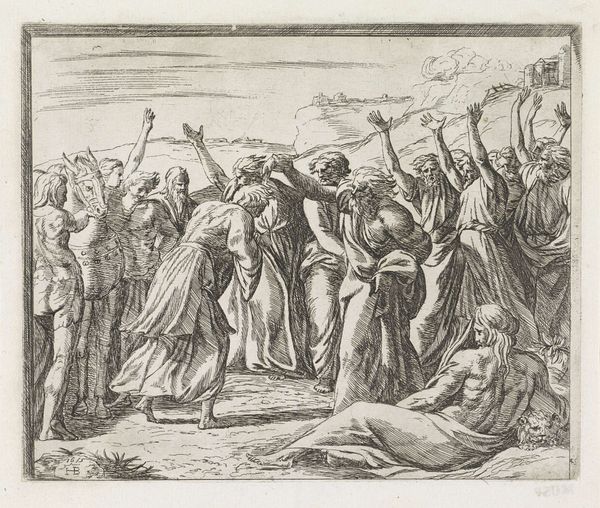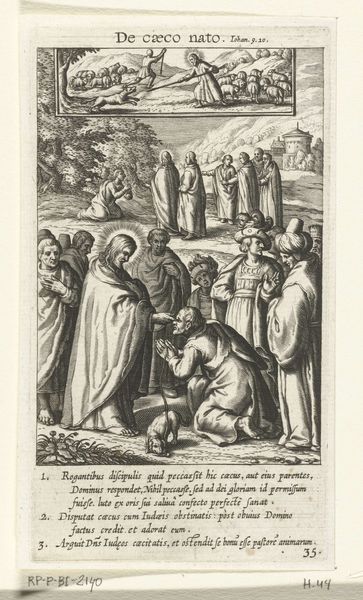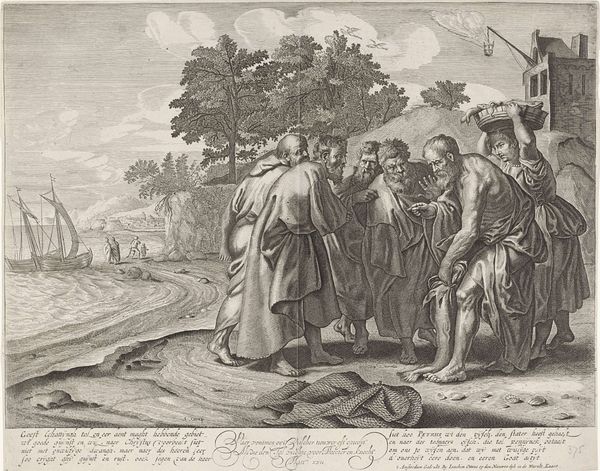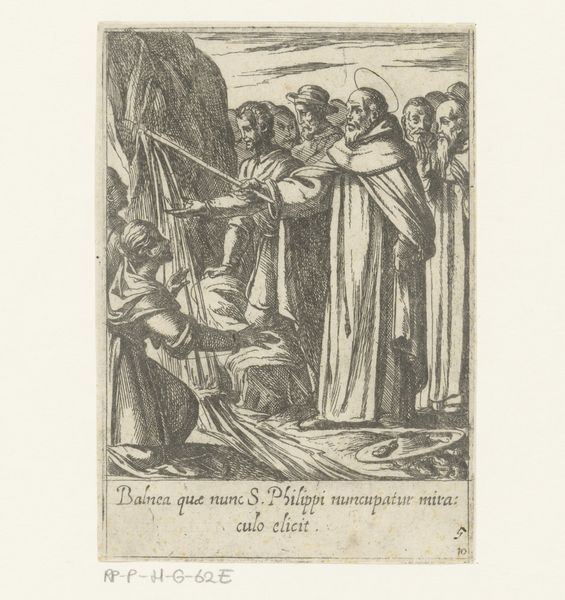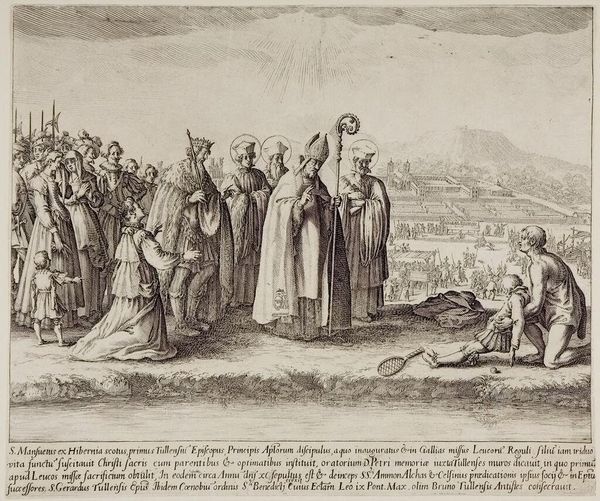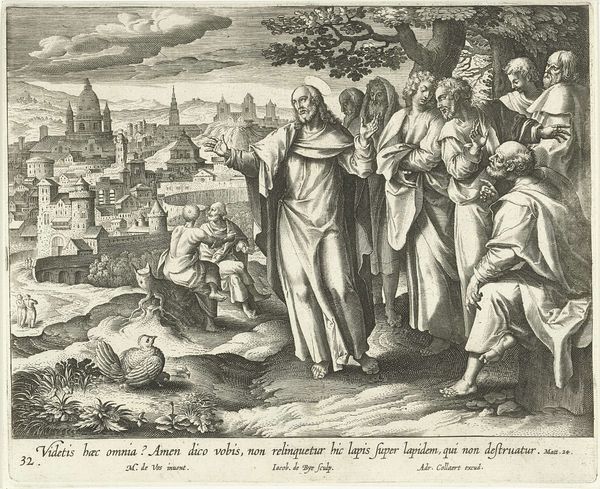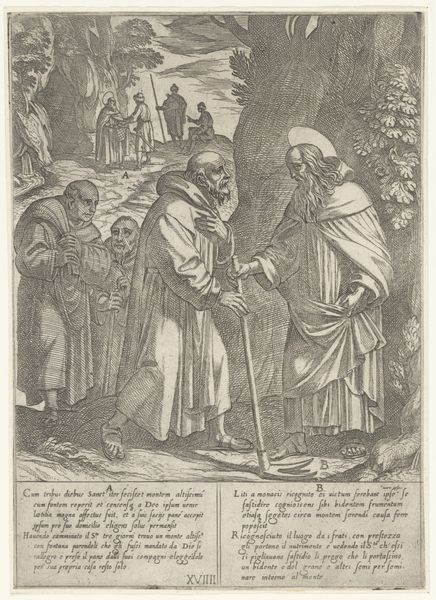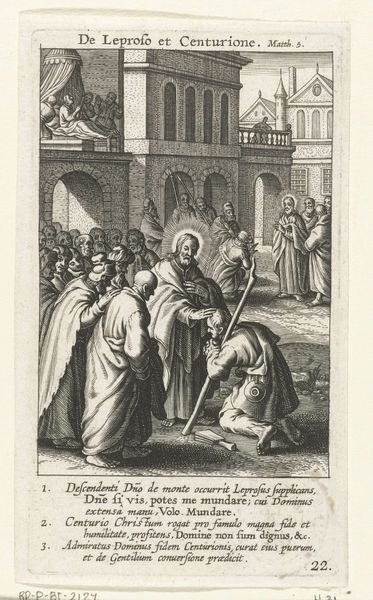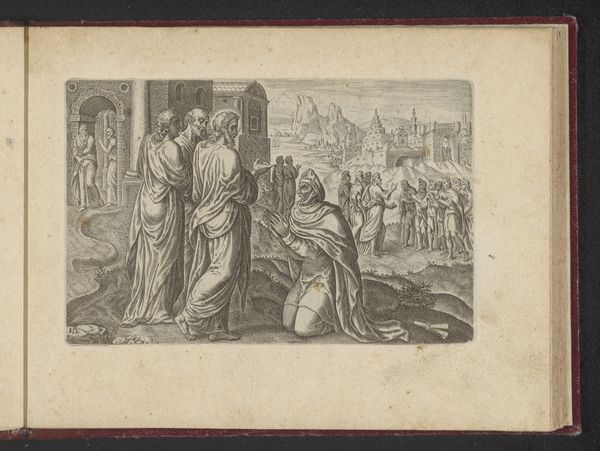
print, engraving
# print
#
landscape
#
figuration
#
line
#
history-painting
#
northern-renaissance
#
engraving
#
realism
Dimensions: height 194 mm, width 264 mm
Copyright: Rijks Museum: Open Domain
Curator: Philips Galle's "Rouwstoet verlaat het graf van Christus," created between 1585 and 1586, offers a stark depiction of mourning. This engraving, part of the Rijksmuseum collection, pulls us into a landscape laden with grief. Editor: The immediate feeling I get is one of solemn procession. There's a tangible weight in the figures; the muted tones amplify the emotional gravity of this departure. The figures leaving a stark opening. Curator: Indeed. Galle's composition places the figures in a specific historical and social context. The somber procession departing from the tomb—this isn’t just a scene; it's a reflection on loss, power structures, and the socio-political dimensions inherent in religious iconography during the Northern Renaissance. How are the roles of the figures impacted by gender expectations? Editor: Precisely. Note the use of symbolism—the cave, representing not only the tomb, but perhaps also a descent into the unconscious, a collective processing of trauma. Three crosses rise behind in the composition, these also symbolize something very specific for a believer, and for the uninitiated, these three forms mark an event. The procession and city further in the distance almost like an endless marching. This image relies so much on the symbolism within its context. Curator: It makes me think about how we are still grappling with power structures. Galle seems to highlight the impact of that suffering on the mourners, who appear cloaked, possibly dehumanized by their role and the structures placed upon them. Even their grief is regulated. I wonder how this links to today’s performative activism or visible struggles. Editor: Yes, that’s quite compelling. And considering the medium—an engraving, made for mass production and dissemination—the cultural weight of the image intensifies. Think of the many viewers who engaged with this depiction of loss; they all added to the image's psychological resonance over the centuries. Curator: I agree. Viewing this today, one is confronted with how grief, faith, and societal constraints intersect. How can we reconcile that historical narrative within contemporary discussions of equality and empowerment? Editor: To walk away from it today is to know a bit more about how powerful symbols really permeate and shape experiences. How images function is just as interesting as who is in the image. Curator: Ultimately, Galle's print pushes us to confront not only the religious narrative but also the enduring power of historical representation in understanding present-day complexities.
Comments
No comments
Be the first to comment and join the conversation on the ultimate creative platform.
